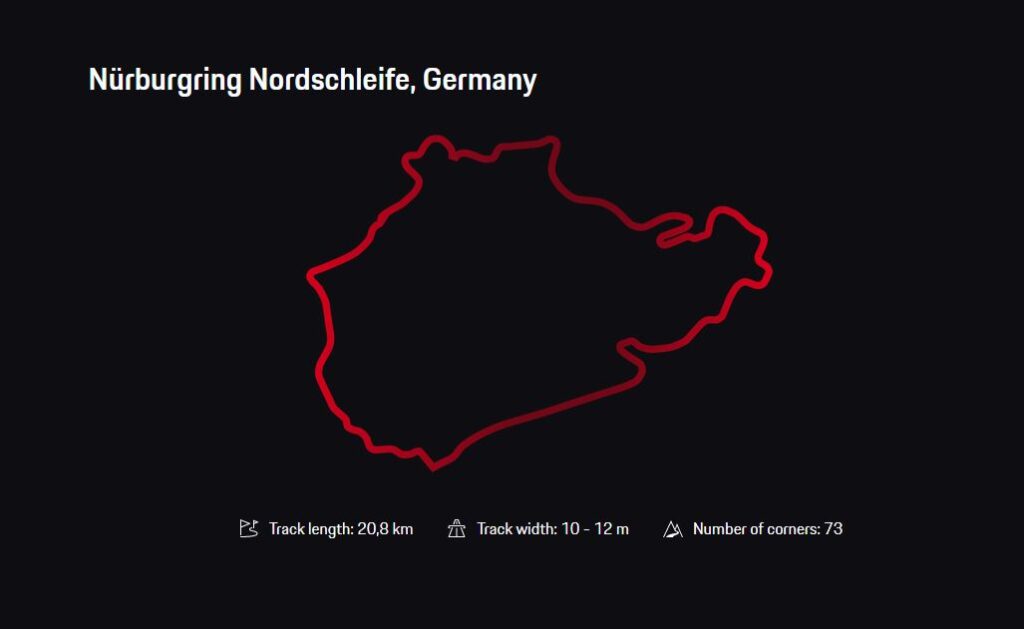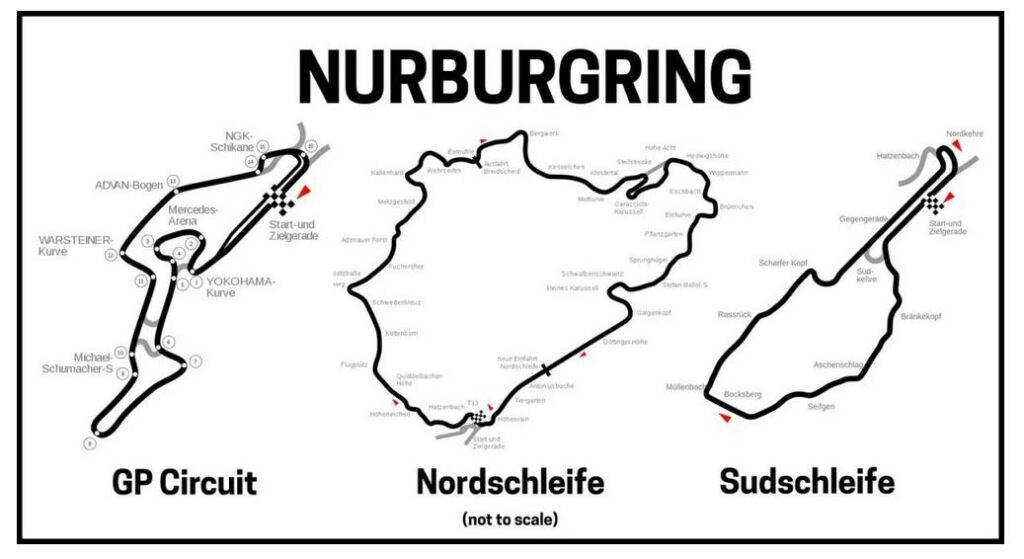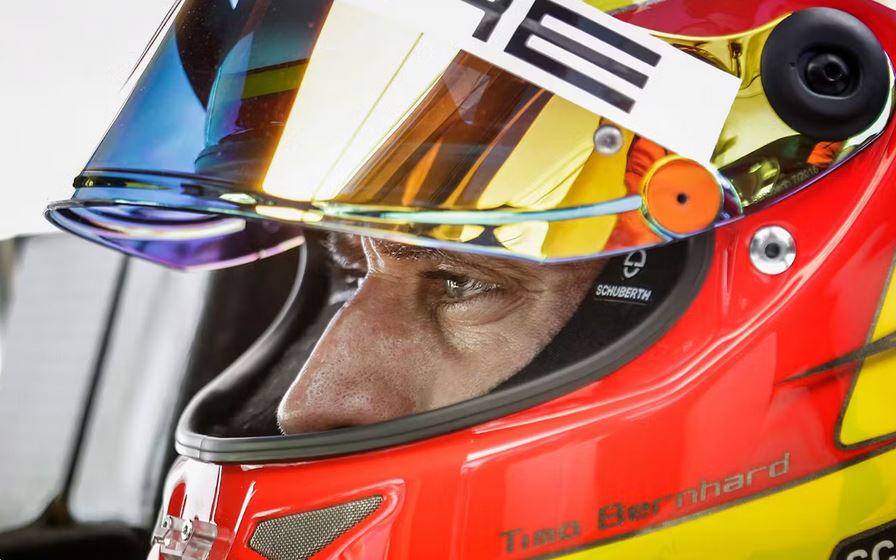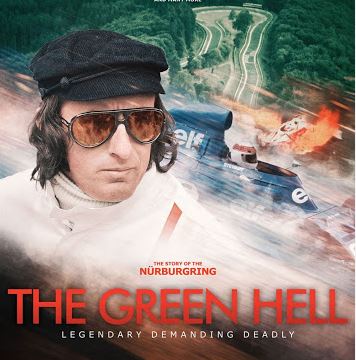Ask anyone to name a famous racetrack, and there’s a good chance they will say Nürburgring. Located in Nürburg, Germany, the track was built in 1925. It’s nearly 13-miles long with 33 right turns, 40 left turns, a maximum grade of 17 percent, and a 921-foot elevation change. It hosts the GT World Challenge Europe, DTM, Nürburgring 24 Hours, NLS, and European Truck Racing Championship ADAC Truck-Grand-Prix.

Since its inception, The ‘Ring, aka the “Green Hell,” has been a public-use toll road, making it a unique track. When not reserved for racing, licensed drivers with road-legal vehicles can complete the circuit for a small fee.
In the early 1900s, car racing was beginning to take a foothold in Europe. In Germany, similar to other countries, races took place on public roads. By 1922, the Eifelrennen series in the hilly Eifel region proved to be quite popular. However, the safety record was negligible, prompting calls for a new raceway, according to Motor Trend. The town of Nürburg was picked as the location, and an estimated 2,500 people worked on the track at a given time. The first race, featuring motorcycles, took place on June 18, 1927, followed by car racing the next day.
The original track featured a 14.2-mile North Loop known as Nordschleife and a 4.8-mile South Loop known as Südschleife. The whole course, known as Gesamtstrecke, was 17.6 miles. Eventually, larger car races focused on the North Loop, and motorcycles and minor races took place on the South Loop. The best drivers were dubbed Ringmeisters.

Racing was paused between 1939 and 1947 during World War II and resumed only after the road was repaired to correct damage from military tanks. By the 1950s and 1960s, the sport’s popularity expanded. Unfortunately, Formula 1 speeds also continued to increase, resulting in additional racing-related deaths. One of the issues with Nürburgring was the narrowness of the circuit and the absence of run-off areas.
F1 drivers wound up boycotting the track in 1970 because it was too dangerous. In response, the worst bumps and some corners were removed from The Nordschleife. However, cars could still get airborne at certain speeds, on some areas of the track. Plus, emergency vehicles had difficulty accessing some spots due to the rural nature of the track.
The German Grand Prix, which had moved to Hockenheimring in 1970, returned the following year, but since it was challenging for the media to film events due to its location, the race was scheduled to move back to Hockenheimring in 1977. In the meantime, famous racer Nicky Lauder unsuccessfully tried to organize a boycott of the track in 1976. He was later injured in a crash there, during the Grand Prix.
The track was desperately in need of improvements. There was little that could be done to reconfigure Nordschleife, so it was shortened with a new bypass to 12.9 miles. Südschleife was completely replaced with a new track, Strecke, in 1984. Together, the two tracks consist of a 15.2-mile loop and are considerably safer, albeit less exciting, than the original circuit.
The German GP was held at Nürburgring in 1985, but was moved back to Hockenheimring the following year until 1995, where it once again hosted the event. In 2007, the race started alternating between the two tracks but ended its run in Nürburgring a decade ago.
Automotive manufacturers also use the track several months a year to record lap times, prompting a lot of one-up competition between automakers and motorsports fans. The fastest lap recorded was by 24 Hours of Le Mans winner Timo Bernhard in 2018. He drove a Porsche 919 Hybrid Evo and achieved a lap time of 5:19.546. He won the Nürburgring 24 Hours five times.

Bernhard told Porsche, “The Evo was perfectly prepared, and I have done my best on this lap. Thanks to the aerodynamic downforce, at sections I never imagined, you can stay on full throttle. I’m pretty familiar with the Nordschleife. But I got to learn it in a new way.”
Bernhard shattered a record that stood for 35 years. Former record holder, Stefan Bellof, achieved a lap time of 6 minutes 11.13 seconds in a 629 PS Rothmans Porsche 956 C, in 1983.
Still, one of the most unique aspects of the track is its accessibility to those without track experience. Anyone with a valid driver’s license and road-ready vehicle can drive on it. However, there are some caveats. There’s a reason why some companies rent vehicles for The ‘Ring. Charges will mount if emergency services are required, barriers need repair, or if the track is closed due to operator, ahem, error. Drenched in motorsports legacy, can we start a petition to make it an eighth Wonder of the World?
(THE FOLLOWING MAY BE GOOD FOR A SIDEBAR?)
Green Hell
During the 1968 German Grand Prix at Nürburgring, Jackie Stewart and other drivers were subjected to near-impossible driving conditions, including torrential downpours and intense fog. Stewart described the first lap in his book Winning Is Not Enough: “Visibility is so pathetically poor I can’t even see Chris’ car in front of me […] I am simply driving into this great wall of spray. I pull out to pass him but the spray is dense and I’m driving blind.”
At the end of the first lap, Stewart (who was driving with a broken wrist in a Matra MS10) took the lead and wound up taking first place, with a staggering four-plus minutes ahead of second place. Stewart’s victory is considered one of motorsports’ greatest performances, according to Automobilist.

Stewart ended up calling the track “Green Hell” due to its 160 turns, changing elevations, and thick forest layout. He, in turn, was given the name “The Flying Scot” for seemingly flying through Nordschleife.